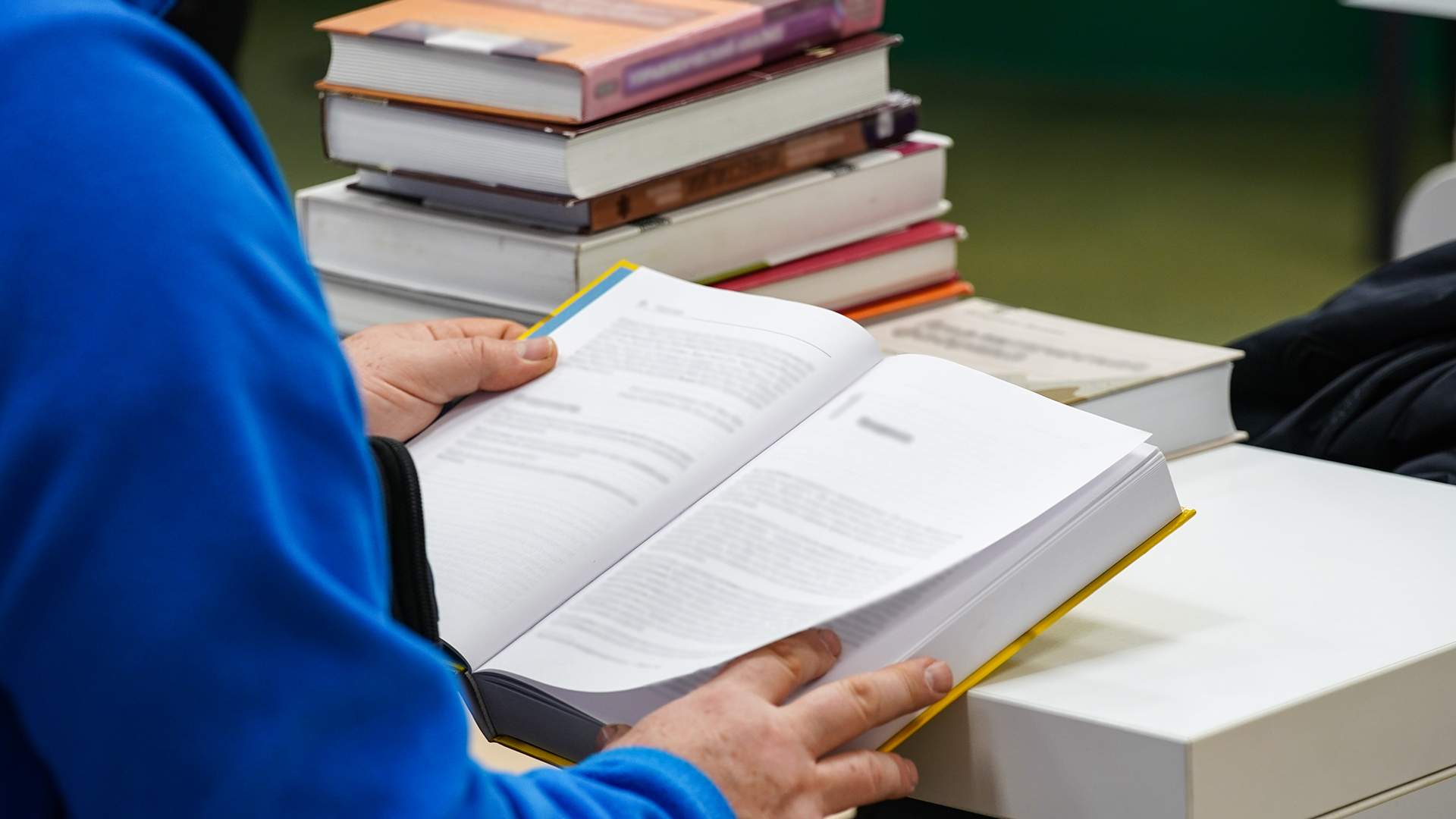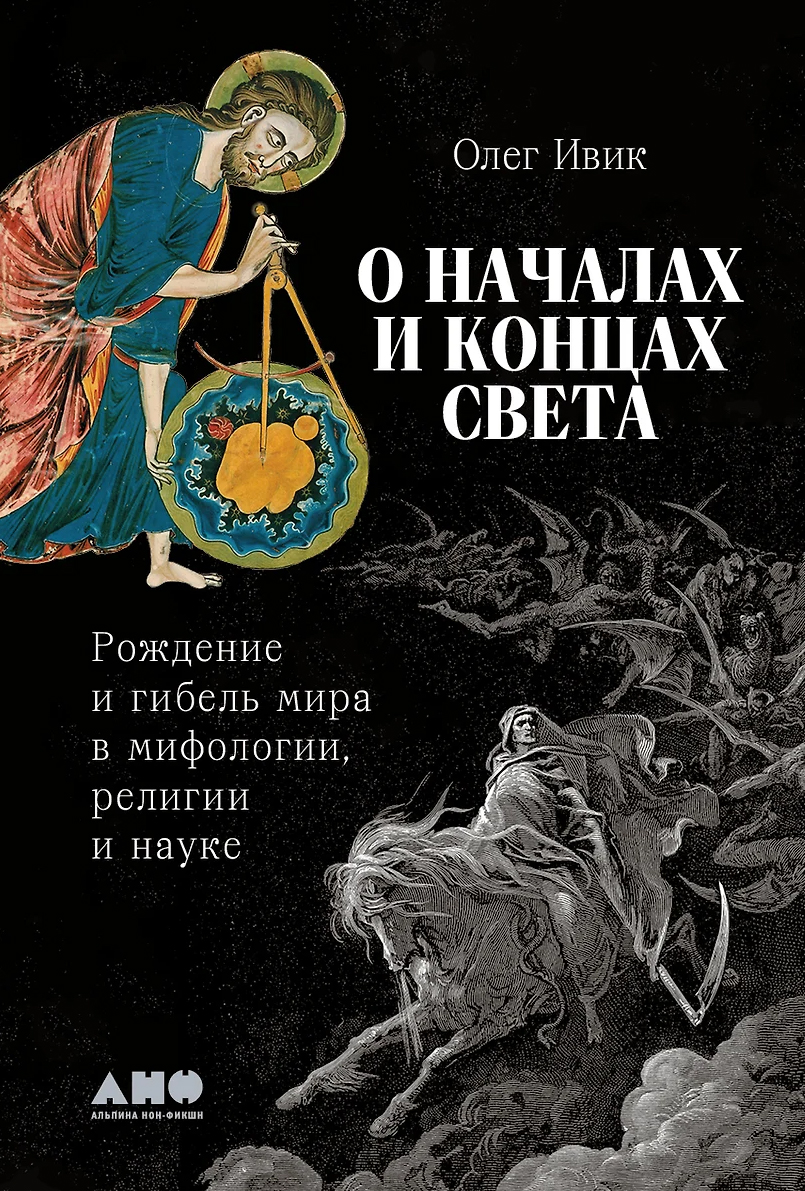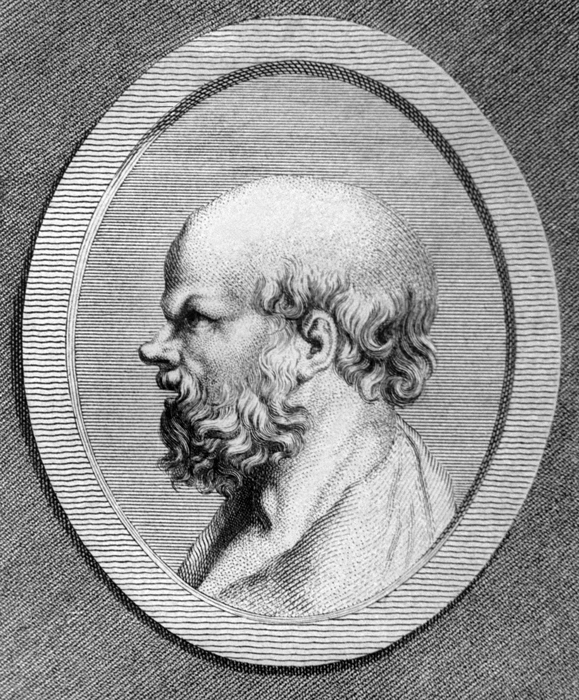- Статьи
- Culture
- How the gods burn people: entertaining cosmogony and eschatology from ancient Egypt to the present day
How the gods burn people: entertaining cosmogony and eschatology from ancient Egypt to the present day

"On the Beginnings and Ends of the World" is one of the most ironic books by the cultural tandem of Olga Kolobova and Valery Ivanov, writing under the pseudonym "Oleg Ivik". What they have managed to come up with over the previous 40000 years in the field of explaining why our universe once arose and why it will cease to exist is told in 12 chapters structured according to geographical and religious principles. Critic Lidia Maslova presents the book of the week, specially for Izvestia.
Oleg Ivik
"On the Beginnings and Ends of the World: The Birth and Demise of the World in Mythology, Religion, and Science"
М. : Alpina Non-Fiction, 2025. - 538 с.
In the new study, the authors did without an introduction and conclusion, which would have helped to systematize all the experience accumulated by mankind on the stated subject. However, in the final passage of the last chapter, which deals with modern eschatology (both scientific and superstitious), Ivik has quite convincing and soothing summary: "The age of our civilization (if we count from the mass appearance of people of modern anthropological appearance) does not exceed 40000 years. And before the Sun starts to change irreversibly (and starts to "fry" the Earth or swallow it up - L.M.), there are more than a billion years left. During this time it is quite possible to come up with something".

The first general observation that can be made, diving into the cosmogonic and eschatological representations of various civilizations, is that in some systems the end of the world is worked out much more carelessly and approximate than the beginning. "The Egyptians liked to talk about the creation of the world and left extensive, though contradictory, information on this subject. They thought about the end of the world much less often," Ivik writes in the first chapter about the ancient Egyptian firmness of both the earthly world and the afterlife, also equipped thoroughly, forever.
The gods of Ancient Mesopotamia, who three times destroyed only people who annoyed them too much with their noise, but then came to terms with mankind, were not going to destroy their universe, which suited them quite well. The finiteness of the world was not very comfortable in the heads of the ancient Greeks: "The Greek gods are life-loving beings, and it was not in their character to plan world catastrophes. <...> There are no supernatural forces capable of breaking the world harmony in the Greek myths. In the days of Zeus' reign there were several cataclysms that could threaten his power and the universe as a whole, but they all ended relatively safely". True, tried to add their spoon of tar some philosophers, especially Stoics with their iron logic: the earth did not exist forever, and what has the beginning, must have and the end.
But even the Stoics not without optimism assumed that from the fire, to which one day the whole universe would be reduced, the next world would be reborn, indistinguishable from the old one, where "Socrates, Plato and all people with their relatives, lovers, fellow citizens would reappear, they would say the same things, help the same things, do the same things, and all cities, villages and lands would appear in the same form". In the chapter on Karelian-Finnish mythology the point "the end of the world" is absent at all, but in Zoroastrianism it is worked out in almost as much detail as its beginning. Moreover, "the whole history of the Zoroastrian universe is a foretaste of that originally predicted time when Good and Evil will be finally separated, Evil will be destroyed, and the righteous will gain eternal life and eternal bliss".

There is enough approximation and contradiction in cosmogonic representations of different countries and peoples, but there are also some common points, somehow present almost everywhere, for example, such an eternal element of protovelenas as water: "This is the water chaos of the Egyptians Nun, and the primary waters of the Sumerians Apsu and Tiamat, and the sea in which the Karelian-Finnish foremother Ilmatar swam...". The Hindus also had their original water - "bottomless, deep" - and in this water (but at the same time "enclosed in emptiness") existed "Something One" in which lurked the potency of the coming development". Another important substance necessary for the act of creation is clay, which is often used by higher beings to make human beings out of it.
It can be found, for example, in the main Scandinavian mythological source, the Elder Edda, where the dwarf Durin molded many human likenesses, which then breathed life into the ace gods Odin, Loki and Hönir. In Chinese mythology, the ancient zoomorphic deity Nyuva, according to one version, "molded people from improvised materials, and different classes were made in different ways" (clay was probably useful for the simpler classes). The Jewish Book of Bereishis tells how "the L-rd G-d created man from the dust of the earth", and another important source on which Ivik relies in the chapter "Judaism" - the tractate Sanhedrin, which is part of the Talmud - specifies the details: "The earth from which Adam was created was gathered from all over the world: the material for the torso was taken in Babylon, for the head - in Palestine, for other parts of the body - in many other countries. The buttocks were made from a small town on the outskirts of Babylonia.
One of the numerous Egyptian regional gods, Khnum, who was associated with the Nile and therefore had a lot of muddy earth at his disposal, was also fond of molding various creatures on the potter's wheel. About this divine hobby Ivik reports with undisguised irony: "Generally speaking, based on their own experience, the authors of this book believe that the potter's wheel is not the most suitable device for making such complex objects as human and animal bodies (we will keep silent about the gods, because our experience does not extend that far). The potter's wheel is more suitable for making vessels symmetrical about the central axis: pots, bowls, etc. But Khnum somehow managed - in any case, the preserved ancient texts repeatedly emphasize that the god molded living creatures on this very device".
Not surprisingly, the people who documented the history of civilization as best they could were much happier to speculate and fantasize about the creation of the world than about its end, which is no less inevitable if you don't think about it. On the other hand, thinking about it too much and intensely, going to the other extreme, is also fraught with unnecessary excesses. These are described in Chapter 11, "Christianity," where Ivick notes that Christians saw the end of the world as much closer than in other religions because it was directly linked to the coming of the Messiah, after whom "the old world would collapse and the resurrection of the dead would begin." Many people saw the Messiah in Jesus, and therefore "after the crucifixion and resurrection of Jesus, Christians were waiting for the End of the World literally from day to day.
In Russia, which together with Christianity adopted the Byzantine chronology, also began to calculate the appropriate date of the end of the world from the Creation of the World, giving it a practical meaning: "Judging by the surviving documents, in Russia in 7000 years from the Creation of the World fell business activity of the population - there were fewer transactions than in previous and subsequent years. In the spring of 1492, some peasants in Russia did not plant fields because they did not expect to take advantage of the harvest. For many, because of the famine, this year really was the last".
The fact that the end of the world never came in 1492 did not prevent Christians a couple centuries later from expecting it with the same impatience and the same vain foresight. Ivik tells how the Old Believers of Nizhny Novgorod lay down in coffins in advance, leaving all worries about earthly things: "Even from the fall of 1668 they abandoned fields, did not plow, did not sow, and in 1669 they abandoned houses. Hungry cattle, abandoned to their fate, wandered without shepherds and pitiful mooing echoed the mournful singing of the owners lying in their coffins".
Presenting these pictures, on the one hand, one can humanly understand the desire of believers to prepare properly for the end of the world and their unwillingness to make meaningless household efforts, which will go to waste anyway. But at the same time it is difficult to deny the wisdom of the Islamic approach, which suggests not to be too interested in the details of the last days of the existence of the universe, as well as the date of its demise - all this is completely irrelevant to mere mortals and is known only to Allah, who will know when it is necessary: "It will be announced to man on that day what he has prepared ahead and postponed".
Переведено сервисом «Яндекс Переводчик»




